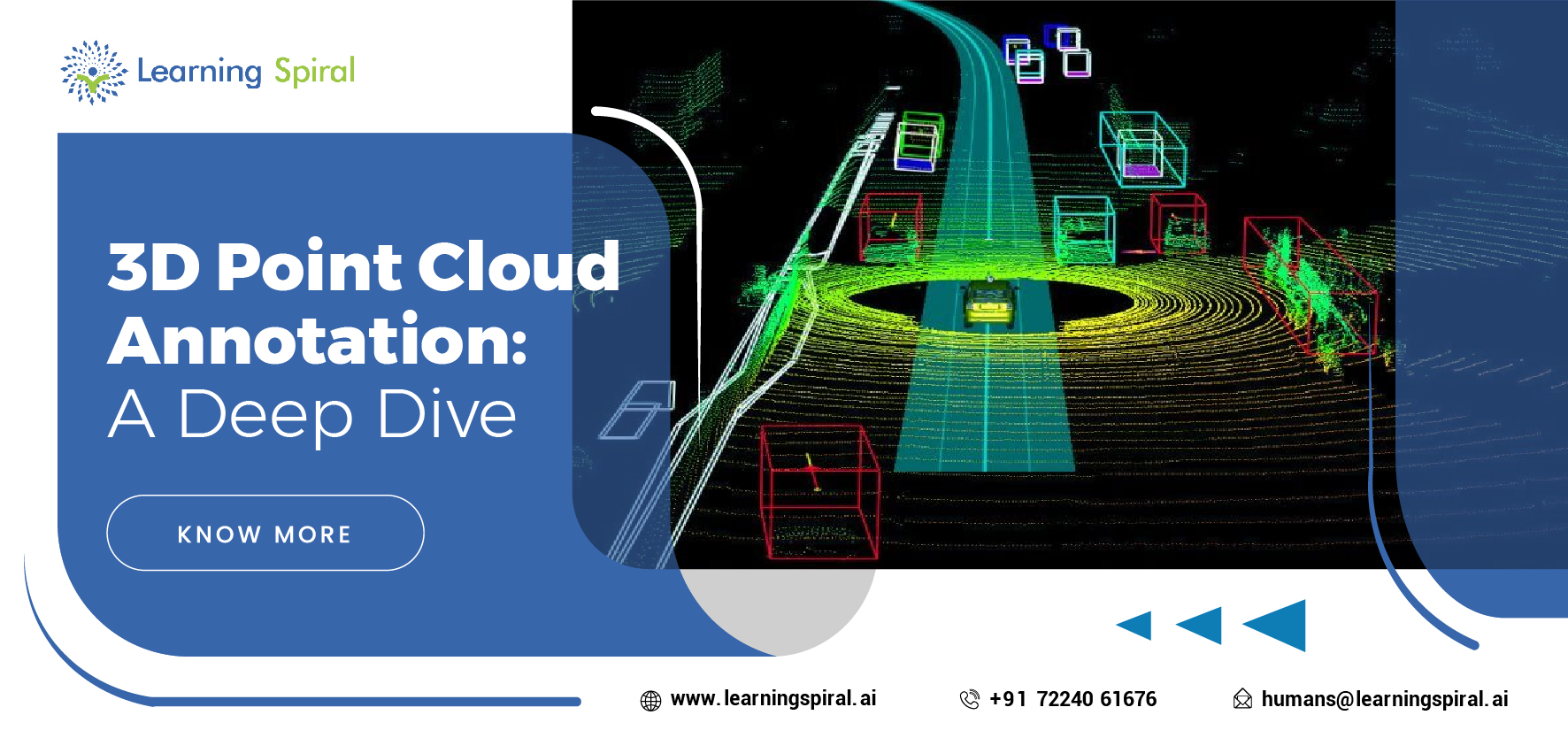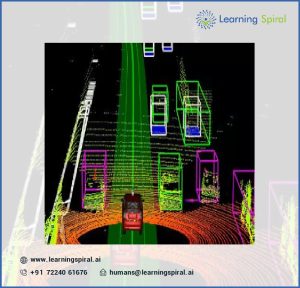
3D point clouds, a collection of 3D points representing a physical object or scene, have become increasingly prevalent in various fields, from robotics and autonomous vehicles to virtual reality and augmented reality. To train AI models to understand and interpret these complex data structures, accurate and efficient annotation is crucial.
Understanding 3D Point Cloud Annotation
3D point cloud annotation involves labeling individual points or groups of points within a point cloud with specific semantic information. This information can range from simple object categories (e.g., “car,” “person,” “building”) to more detailed attributes (e.g., “color,” “material,” “orientation”).
Key Challenges in 3D Point Cloud Annotation 
Here are some challenges one might encounter while handling 3D point cloud annotation:
- Complexity:
Point clouds can be dense and noisy, making it difficult to accurately identify and label individual points.
- Dimensionality:
Working with 3D data introduces additional complexities compared to 2D images, such as handling depth information and perspective.
- Annotation Efficiency:
Manually annotating large point clouds can be time-consuming and labor-intensive.
Advanced Annotation Techniques
To address these challenges, researchers and practitioners have developed several advanced techniques:
- Semi-supervised Annotation: Combining manual annotation with automated techniques to improve efficiency while maintaining accuracy.
- Active Learning: Prioritizing points for annotation based on their informativeness to the model, reducing the overall annotation burden.
- Weak Supervision: Leveraging limited annotations (e.g., bounding boxes) to train models that can infer more detailed labels.
- Synthetic Data: Generating synthetic point clouds with known ground truth to supplement real-world data and improve model performance.
Applications of 3D Point Cloud Annotation
Some examples where 3D Point Cloud Annotation can be utilised are:
- Autonomous Vehicles: Training AI models to perceive and understand the environment, enabling safe and efficient navigation.
- Robotics: Enabling robots to interact with the physical world, perform tasks like object manipulation, and navigate complex environments.
- Virtual and Augmented Reality: Creating realistic and immersive virtual experiences by accurately representing real-world objects and scenes.
- Urban Planning: Analyzing urban environments to identify areas for development, infrastructure improvements, and traffic management.
Tips for Effective 3D Point Cloud Annotation
Use the below tips for easily handling:
- Use Consistent Labeling Guidelines: Establish clear and consistent guidelines to ensure that annotators label points in the same way.
- Leverage Annotation Tools: Utilize specialized tools designed for 3D point cloud annotation to streamline the process and improve efficiency.
- Consider Data Quality: Ensure that the point clouds used for annotation are of high quality, with sufficient resolution and accuracy.
- Validate Annotations: Regularly validate annotated data to identify and correct errors.
- Explore Synthetic Data: Consider generating synthetic point clouds to supplement real-world data and improve model training.
Future Trends
As the field of 3D point cloud processing continues to evolve, we can expect further advancements in annotation techniques. Some emerging trends include:
- Deep Learning-based Annotation: Leveraging deep learning models to automate or assist in the annotation process.
- Multimodal Annotation: Combining point cloud data with other modalities (e.g., images, LiDAR) for more comprehensive understanding.
- Large-scale Annotation Datasets: The creation of large-scale, publicly available datasets to facilitate research and development.
Conclusion
3D point cloud annotation is a critical step in unlocking the full potential of 3D data. By addressing the challenges and leveraging advanced techniques, we can continue to develop AI models that can accurately perceive and understand the world around us.

